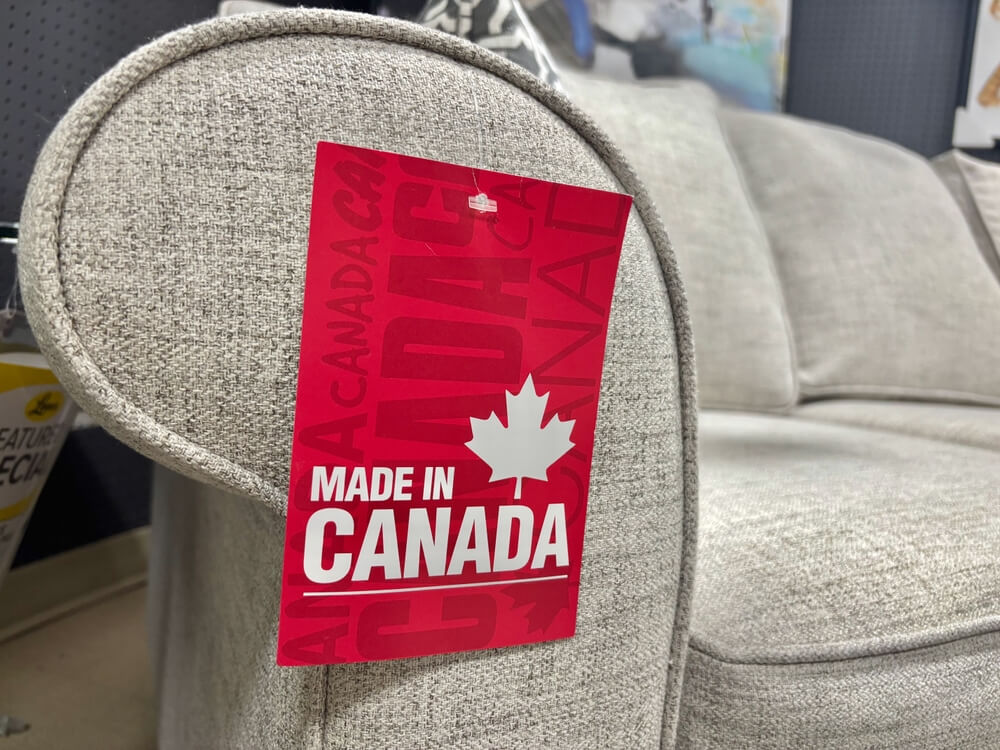
If you are not redirected within 30 seconds, please click here to continue.
Samedi: 10h – 16h HAE

If you are not redirected within 30 seconds, please click here to continue.
If you are not redirected within 30 seconds, please click here to continue.
How to Upgrade or Downgrade Your Credit Card in Canada

- Apply for the Scotia Momentum® Visa Infinite* Card and get a $150 e-Gift Card from RATESDOTCA upon approval until July 31, 2021.
- A product change from your credit card issuer may spare your hard-earned points and enable you to get a higher earn rate on everyday purchases.
- A new welcome bonus can be more advantageous than your old reward balance, often offering hundreds of dollars in savings.
Is it time to upgrade your credit card? This question may not cross your mind as often as it should.
While you may be content with the card you already use — there is, after all, a reason you chose it in the first place — over time, you will likely become eligible for higher-tier products offering better earn rates and benefits.
Credit card issuers, typically banks, and payment networks, like Mastercard, Visa, and American Express often work together to bring cardholders points or cash back, and perks like discounts or concierge services, insurance coverages, and fraud protection — usually in a series of tiers, with the higher levels having the most to offer. However, the application requirements often rise as you advance up the ladder.
Understanding the eligibility requirements and benefits can help you decide the right time to upgrade or, in some cases, downgrade your credit card. Learn what issuers provide and the questions you need to ask before you make the switch.
Compare the best credit cards on RATESDOTCA
Find the best credit card for your lifestyle today!
Credit cards tiers
Like Scotiabank, credit card issuers often group credit cards in families of two or three cards. The first card in the series will typically have no fee. Each level up will increase the rewards structure and benefits but will often also increase the annual fee.
Here, we compare the Scotia Momentum cards. Pay close attention to the reward structure and application requirements (personal income and credit score):
Credit card | |||
Annual fee | $0 | $39 | $120 |
Welcome bonus |
|
|
|
First-year value* | $306 | $463 | $867 |
Rewards |
|
|
|
Perks |
|
|
|
Interest rates | Purchases: 19.99% Cash advances: 22.99% Balance transfer: 22.99% | Purchases: 19.99% Cash advances: 22.99% Balance transfer: 22.99% | Purchases: 20.99% Cash advance: 22.99% Balance transfer: 22.99%
|
Recommended credit score | 660+ | 660+ | 740+ |
Income requirements | Personal: $12,000 Household: N/A | Personal: $12,000 Household: N/A | Personal: $60,000 Household: $100,000 |
*The RATESDOTCA Best of Finance methodology assumes the cardholder spends an average of $2,000 a month on their card to determine the first-year value. The calculation includes all welcome bonuses and promotional offers at the time of publishing.
The Scotia Momentum® No-Fee VISA* Card and the Scotia Momentum® VISA* Card are similar, requiring a good credit score (660+) and a minimum personal income of $12,000. However, the $39 annual fee on the Scotia Momentum® VISA* Card grants cardholders a slightly higher earn rate on everyday purchases and shopping coverage like purchase protection and extended warranty.
Related read: Are Credit Cards with Annual Fees Worth It?
The jump to the next tier is not as subtle. The annual fee on the Scotia Momentum® Visa Infinite* Card triples compared to the Scotia Momentum® VISA* Card at $120. However, the highest tier features a generous 4% cash back rate on groceries and recurring bill payments, double that of the mid-tier card, and more accelerated earning categories. It also provides Visa Infinite Benefits with exclusive access to wine and dining collections, concierge service, special offers, travel insurance, and shopping coverage — perks that offer convenience and savings.
Nevertheless, you may have noticed it also requires an excellent credit score (740+) and a minimum personal income of $60,000 or a household income of $100,000 to be eligible.
Pro tip: Using your household income to apply for top-tier credit cards can make them more accessible.
Payment network tiers
Many of the payment networks also have tiers, ensuring a familiarity between co-branded cards. Apart from rewards and issuer exclusive perks, a Visa Infinite Card from Scotiabank will have many of the same features as a TD Visa Infinite Card, for example.
Here is a quick summary of some of the perks you can expect from Visa cards:
- Visa Classic: All Visa cards include the Zero Liability Policy for protection against unauthorized transactions and fraud, though the Visa Classic cards have little else in the form of perks.
- Visa Gold: Get a higher spending limit and shopping coverage.
- Visa Platinum: Get basic travel insurance coverage.
- Visa Infinite: Access concierge service and exclusive perks like the Visa Infinite* Dining and Wine Country program.
- Visa Infinite Privilege: Get luxury perks like lounge access and high-end hotel perks.
Each tier will usually have everything from the level before and more. While these details pertain to many cards, check the terms and conditions that apply to each product.
How to upgrade your credit card
The Scotia Momentum example above (click here to return to the comparison) illustrates the varying application requirements within one credit card family. We at RATESDOTCA understand that the strict eligibility requirements of a top-tier credit card may be holding some people back. However, when it comes to credit card tiers, everyone must start somewhere, which may be at level one.
There are two ways to advance your credit card status after that:
Opt-in or automatic changes
In some cases, issuers have been known to automatically advance a cardholder to a higher tier once they have met specific requirements such as spending limits or good account practices. Automatic changes frequently regard secured credit cards.
However, the same can be said about the opposite. Cardholders of the President’s Choice Financial® World Elite Mastercard® are required to spend at least $15,000 annually on their card to maintain eligibility, or they may get automatically downgraded.
Cardholders may also hear from their issuer to opt-in to a higher tier if they meet new eligibility requirements. As a cardholder, it can also be beneficial to reach out to your issuer after life changes like a promotion or pay raise at work. The issuer may not be aware of your income changes and, therefore, may not offer a product change.
Product change
Typically, the credit card must be within the same family of cards in order to keep your reward balance intact. You often retain your account number and credit limit. Not only that, but the issuer may not have to run a new credit check, but be sure to ask before you proceed.
Related read: What Is a Good Credit Score?
While we like to advocate for the benefits of fee cards, sometimes cardholders can no longer justify the expense. A product change may also be used to downgrade an account to a card with no fee. This strategy can ensure the account stays open, maintaining the credit history and helping to support a good credit score.
The downsides to a product change
Upgrading your credit card may be less rewarding than applying for a new one outside your credit card family. Some welcome bonuses are only available if you have not held that card (or a card from that family) within the previous two years. Depending on your current reward balance, it may be more lucrative to search for a generous welcome bonus instead.
On the other hand, when downgrading your card, you will lose your top-tier perks and benefits, and there is no hack for that.
Making the switch
With each lifestyle change, it can be beneficial to reassess your payment preferences and whether they still serve you well. If you meet the eligibility requirements for top-tier products, you can earn more rewards for your everyday spending. However, if you have a healthy reward balance, it will only be advantageous to ask for a product change if the issuer guarantees your points or cash back — unless you want to spend them right away.
Rates, product information and reward estimates are subject to change at any time and do not constitute financial advice. This post was not sponsored. RATESDOTCA may receive a referral fee from our partners or affiliate links featured on the site; however, our editorial choices are objective and free from bias. The opinions expressed in this article are purely those of RATESDOTCA; thus, the credit card issuers and partners are not responsible for any editorials or reviews that may appear. Please visit the associated website for complete and current terms and conditions on any product or service mentioned. The information in this article is accurate as of the date of this posting, July 7, 2021. Read our full disclaimer.
Get money-saving tips in your inbox.
Stay on top of personal finance tips from our money experts!










